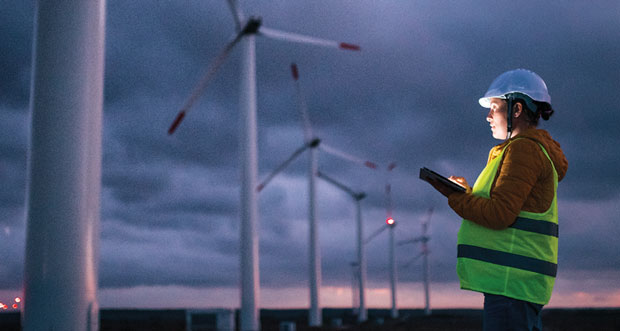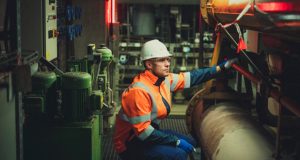Kevin Mcguane, Sector MD, DMA Group explains the differences between embodied carbon and operational carbon and how focusing on the latter could reap energy saving benefits for the built environment
Climatic events over the past couple of years have created a renewed sense of urgency in the race to net zero. Just prior to the outbreak of the global COVID-19 pandemic, Australia witnessed some of the worst bushfires in its history, while in July 2021 several European countries suffered devastating levels of flooding caused by unprecedented volumes of rainfall. Closer to home, we recently witnessed the worst storm to hit UK shores for decades.
These extreme weather events, from droughts and hurricanes to flooding and wildfires, are reoccurring with increasing severity and frequency at a time when Arctic ice sheets are splintering and rainforests are shrinking. Indeed, the time for joined up action between public and private spheres around the world, is now.
Yet, we have another crisis on our hands. It was just three months ago when world leaders met at COP26. Ambitious commitments were made to help reduce fossil fuel usage. There was hope. However, the perils of a warming planet and the transition to renewable energy risks taking a back seat and being replaced with energy security as the world’s largest energy supplier, Russia, begins war with Ukraine. This new global crisis may force policymakers to backtrack on their efforts to decrease the use of fossil fuels that pump deadly greenhouse gases into the atmosphere. Therefore, we need hope to start fighting back.
THE TWO TYPES OF CARBON
Cutting carbon emissions and creating a committed net zero society is widely seen as the best way to mitigate the challenges posed by climate change.
The UK government has already stated its mission to reach net zero emissions by 2050, and to cut emissions by 78 per cent by 2035, compared with 1990 levels. This makes it the first major country to legislate for such a goal.
Carbon emissions can broadly be split into two major categories.
Embodied carbon translates into all the carbon dioxide emitted in producing materials. It is estimated from the energy used to extract and transport raw materials, as well as emissions from manufacturing processes.
Looking at buildings specifically, the embodied carbon of a construct can include all the emissions from the construction materials, the building process, and all the fixtures and fittings inside. Furthermore, it also covers emissions from deconstructing and disposing of components at the end of its lifetime.
Embodied carbon is an important barometer through which to strategise and measure net zero action.
Urbanisation is accelerating across the globe – by 2050, more than two-thirds of the world population will live in urban areas, meaning architects and developers must prioritise reducing carbon emissions during the design and construction of new builds.
With embodied carbon playing a more significant role to the life cycle carbon emissions associated with a building, attention has begun to be more focussed on how different construction materials might affect both different types of carbon and their emissions.
However, what is often overlooked is the environmental footprint of our current building stock.
This is where focus on operational carbon enters the picture. Operational carbon is the amount of carbon emitted during the operational or in-use phase of a building, which can include the use, management and maintenance of a product or structure.
Currently, it accounts for 28 per cent of all global greenhouse gas emissions, compared to the 11 per cent stemming from embodied carbon.
A brighter spotlight therefore needs to be shone on operational carbon. The World Green Building Council’s Net Zero Carbon Buildings Commitment is a good example to follow, as it factors in equal embodied and operational carbon weighting into its approach.
Its requirements (geared towards net zero by 2030) are certainly bold. But they represent the sort of ambition that is needed to make meaningful progress.
Tagged with: DMA Group embodied carbon energy management operational carbon





